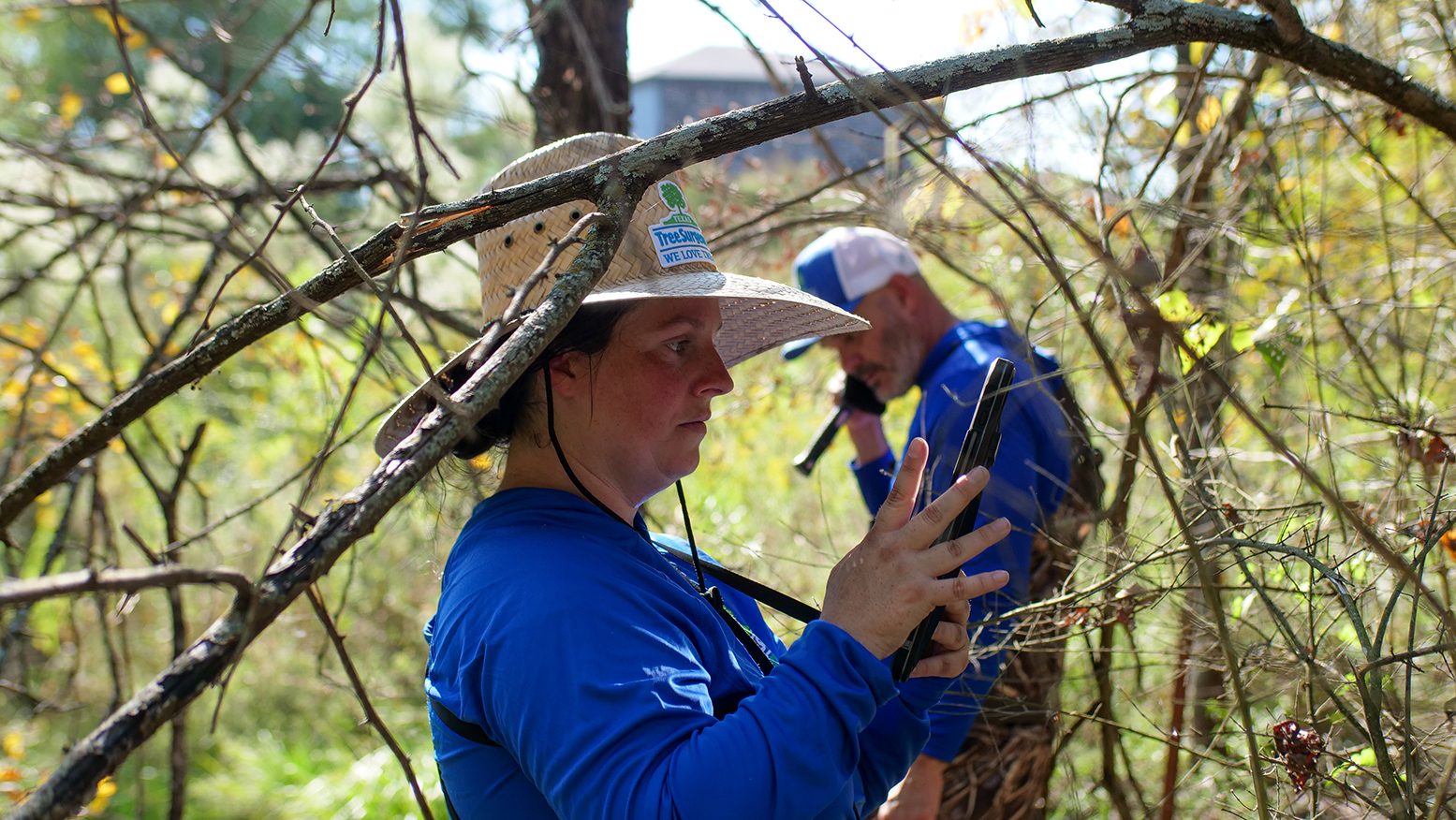Will Live Oaks Survive Freezing Temperatures, Ice, and Snow?

Live oaks are a common sight in North Texas. These native trees are well-adapted to our soil and climate, but can still be stressed by extreme weather. Many, if not all, live oaks will show signs of frost damage after a hard freeze. Like other plants, the main symptom will be brown, dead, or wilted leaves. Live oaks may show browning in patches or over a whole tree.
Luckily, we expect most live oaks to recover from the freeze! The usual live oak leaf exchange in the spring should replace the dead leaves and enable the trees to take up nutrients. New growth may be thin in the coming year, however, because of residual stress. Young live oaks or trees that are already stressed by disease or insect activity may have a harder time recovering. It is important to monitor live oaks as we move into spring and summer to assess their ability to come back.
The live oak (Quercus virginiana) is a North Texas landscape staple. Hardy and evergreen, live oaks can range in size up to 50 feet tall and 100 feet wide. Live oaks do not drop leaves in the fall, but rather have a leaf exchange in the spring. Once prized for shipbuilding due to their naturally-curved limbs, live oaks are now appreciated as landscape trees and the wood is used for fires and cooking. Live oaks are susceptible to oak wilt, but are more resistant than other species of oak, such as red oaks.
Do brown leaves after a freeze mean a Live Oak is dead? No!
Even if its leaves brown after a freeze, the live oak will probably recover. Live oaks generally have a leaf exchange in the spring, and the leaves that were killed by frost should be replaced by new leaves when the tree starts budding. In some cases, the dead leaves may fall off before the new leaves emerge.
If a live oak does not put out new leaves in the spring, it may have been damaged beyond recovery. Consult a local ISA Certified Arborist to evaluate your tree.
Can I do anything to help a freeze-damaged live oak recover? YES: WAIT!
With damage from freezing weather, it is often best to wait and see how the tree responds before deciding if the live oak is salvageable. In the meantime, however, taking proper care of the tree can increase its chances of making a recovery.
Live oaks that have lost their leaves cannot pull water and nutrients from the soil like they would normally, and need extra help. Once the ground has thawed after a freeze, water your live oaks by doing a root soak with a hose; don’t rely on sprinklers. Help replenish depleted soil nutrients by fertilizing and using soil amendments. Like other frost-damaged trees, live oaks will need extra care in the years to come, as the trees’ stored energy is depleted due to stress.
At Texas Tree Surgeons, we love trees and we love our community! While the effects of freezing weather will vary depending on species, live oaks should be able to bounce back from the winter weather of February 2021. In the coming months and years, as the full effects of the freeze become apparent, contact us to have one of our ISA Certified Arborists out to look at your trees and give you the information you need to best care for them!
Related Blogs
Similar blogs related to this topic


Top 10 Things We'd Tell You as an Arborist if We Weren't Afraid of Hurting Your Feelings
This is a list of tree care worst practices that you, or someone you know may be guilty of. Read the following list at your own risk. You’ve been warned, feelings may get hurt. 1.…
Read more

Avoid These Tree Care Mistakes for a Healthy Landscape
Below is a list of overlooked mistakes that could jeopardize the health of your trees. From missteps in pruning to incorrect watering practices, discover how to give your trees the care they deserve. Red oak…
Read more

Why do Arborists Recommend Soil Sampling in Urban Areas like Dallas?
Soil sampling is a crucial practice in urban areas like Dallas. It helps arborists make informed decisions about your landscape to ensure a healthy urban ecosystem. Our native soils vary widely—from the dense clays of…
Read more
